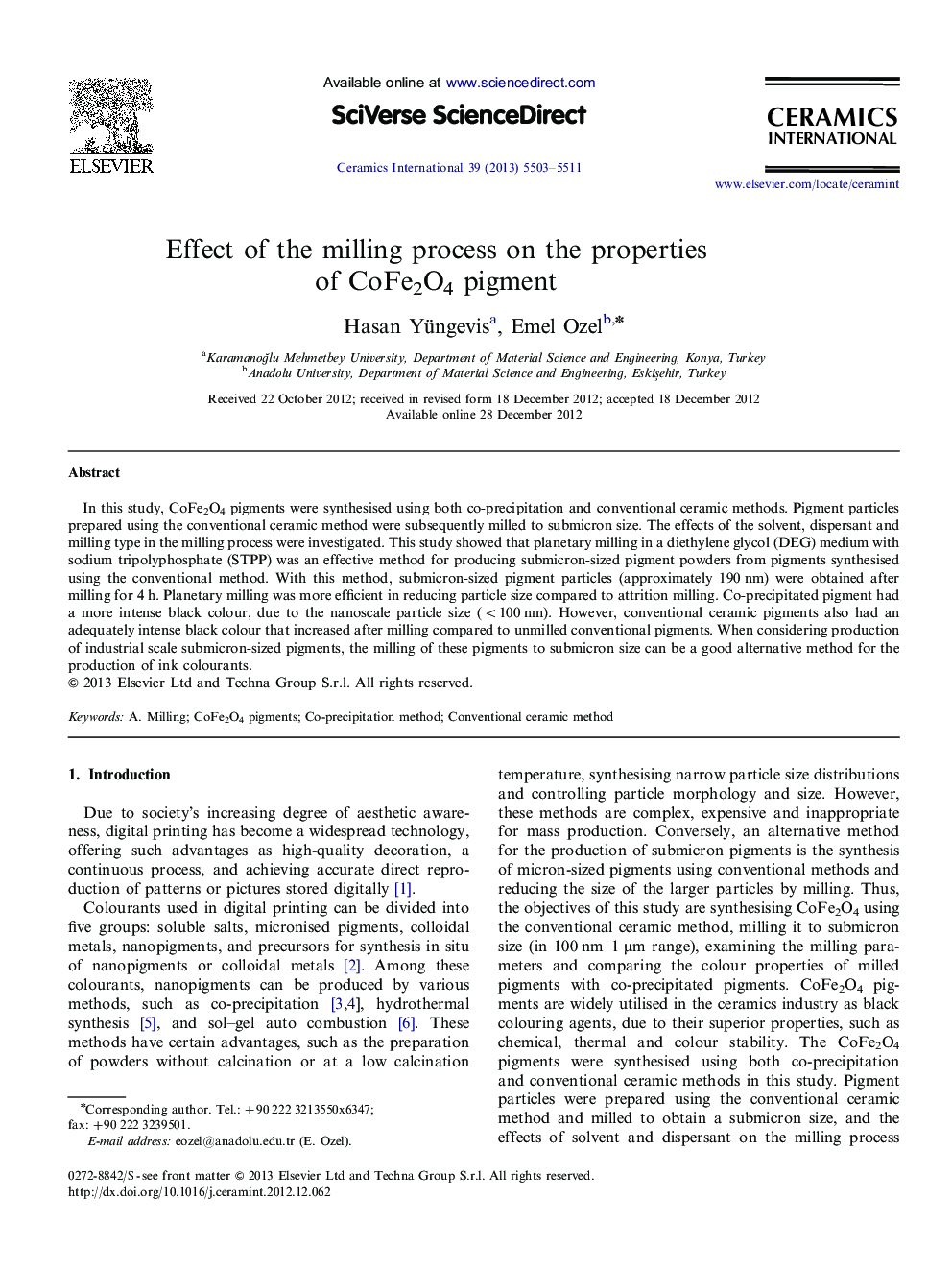| کد مقاله | کد نشریه | سال انتشار | مقاله انگلیسی | نسخه تمام متن |
|---|---|---|---|---|
| 1463165 | 989642 | 2013 | 9 صفحه PDF | دانلود رایگان |

In this study, CoFe2O4 pigments were synthesised using both co-precipitation and conventional ceramic methods. Pigment particles prepared using the conventional ceramic method were subsequently milled to submicron size. The effects of the solvent, dispersant and milling type in the milling process were investigated. This study showed that planetary milling in a diethylene glycol (DEG) medium with sodium tripolyphosphate (STPP) was an effective method for producing submicron-sized pigment powders from pigments synthesised using the conventional method. With this method, submicron-sized pigment particles (approximately 190 nm) were obtained after milling for 4 h. Planetary milling was more efficient in reducing particle size compared to attrition milling. Co-precipitated pigment had a more intense black colour, due to the nanoscale particle size (<100 nm). However, conventional ceramic pigments also had an adequately intense black colour that increased after milling compared to unmilled conventional pigments. When considering production of industrial scale submicron-sized pigments, the milling of these pigments to submicron size can be a good alternative method for the production of ink colourants.
Journal: Ceramics International - Volume 39, Issue 5, July 2013, Pages 5503–5511